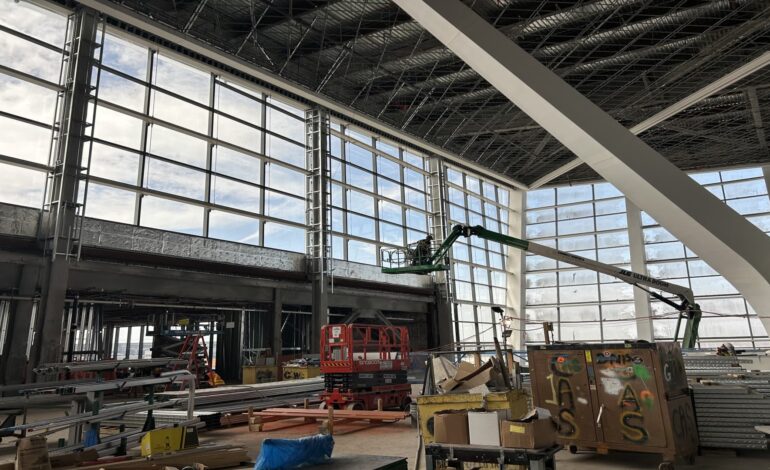JFK Airport’s $9.5 Billion Terminal 1 Nears Completion for 2026

Construction of the new $9.5 billion Terminal 1 at John F. Kennedy International Airport is progressing rapidly, with plans for its first phase to open in mid-2026. This new terminal will replace the existing facility that has operated since 1998, marking a significant upgrade for one of the United States’ busiest airports.
The development of Terminal 1 is a crucial part of the Port Authority of New York and New Jersey’s broader $19 billion overhaul of JFK. When completed, the terminal will be the largest at JFK, featuring modern amenities designed specifically for international travelers. According to Jennifer Aument, CEO of the New Terminal One, the design focuses on creating a welcoming environment for international customers from the outset.
Terminal Features and Design
The construction site has become a hive of activity, with essential structures such as winding baggage conveyor belts already installed. Future ticket counters will accommodate airlines including Turkish Airlines, Air New Zealand, and Etihad Airways, allowing passengers to check in and drop off luggage efficiently. The terminal is designed to offer a seamless travel experience, with all key areas, including departures, security, and customs, located on the same floor.
The terminal will be approximately twice the size of the two recently opened LaGuardia Airport terminals combined. Its architectural design, led by Gensler, is intended to evoke the image of a butterfly, with slanted windows allowing natural light to flood the space. This innovative layout aims to enhance the overall passenger experience, eliminating traditional basement customs lines.
The terminal’s opening is strategically timed to coincide with the start of the 2026 World Cup, which will see some matches held at MetLife Stadium in New Jersey. As a result, more than half of the airlines operating at JFK will undergo terminal changes during the construction period.
Investment and Future Capacity
The new Terminal 1 will initially include 14 gates capable of handling wide-body aircraft, facilitating long-haul flights. Upon completion, it will feature a total of 23 gates, including 22 wide-body and one narrow-body gate, with a projected annual capacity of 14 million passengers. The entire project is expected to conclude by 2030.
In addition to passenger facilities, Terminal 1 will boast over 300,000 square feet of dining, retail, and recreational space, with more than half of that dedicated to retail and dining options. Notably, the terminal will introduce a cash-and-carry duty-free shopping experience, allowing passengers to collect duty-free purchases immediately rather than receiving them before boarding.
The terminal will also incorporate a microgrid with solar panels on the roof, ensuring operational resilience and maintenance capabilities in the event of power disruptions. As U.S. airports face an estimated need for $173.9 billion in infrastructure upgrades through 2029, the investments in JFK are seen as vital for enhancing service quality and operational efficiency.
As air traffic continues to rise, JFK’s transformation stands as a testament to the commitment to modernizing airport infrastructure, improving the travel experience, and meeting the demands of future travelers.






